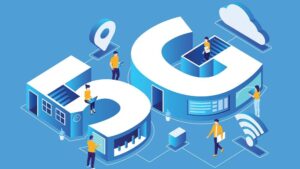Introduction
Consumers want quicker, better, more convenient, and revolutionary data speeds in this internet age. Many people are eager to watch movies on their smartphones while also downloading music and controlling many IoT devices. They anticipate a 5G connection, which will provide 100 times quicker speeds, 10 times more capacity, and 10 times reduced latency. The transition to 5G necessitates significant expenditures from service providers. To support new income streams and enable better, more productive, and cost-effective processes and exchanges, BSS must advance in tandem with 5G network installations (Pablo Collufio, 2019). Let’s get ready to face the challenges of 5G monetization.

Why 5G monetization?
The appropriate 5G monetization solutions may be a superpower, allowing CSPs to execute on 5G’s potential from the start. The commercialization of 5G is a hot topic. “Harnessing the 5G consumer potential” and “5G and the Enterprise Opportunity” are two studies that go through the various market prospects. They illustrate that, in the long term, there is a tremendous new income opportunity for providers at various implementation rates, accessible marketplaces, and industry specializations. “Getting creative with 5G business models” highlights how AR/VR gameplay, FWA (Fixed Wireless Access), and 3D video encounters could be offered through B2C, B2B, and B2B2X engagement models in a variety of use scenarios. To meet the 5G commitments of increased network speeds and spectrum, lower latency, assured service quality, connectivity, and adaptable offers, service suppliers must discuss their BSS evolution alongside their 5G installations, or risk being unable to monetize those new use cases when they become a real thing (Munoz et al., 2020). One of the abilities that will enable providers to execute on their 5G promises from day one is 5G monetization. CSPs must update their business support systems (BSS) in tandem with their 5G deployment to meet 5G use scenarios and provide the full promise of 5G, or risk slipping behind in the 5G race for lucrative 5G services (Rao and Prasad, 2018).
Development of the BSS architecture
To fully realize the benefits of 5G monetization, service providers must consider the growth of their telecom BSS from a variety of angles:
- Integrations with the network – The new 5G Basic standards specify a 5G Convergent Charging System (CCS) with a 5G Charging Function (CHF) that enables merged charging and consumption limit restrictions in the new service-based architecture that 5G Core introduces.
- Service orchestration – The emergence of distributed systems and more business services need more complicated and stricter service coordination and fulfillment to ensure that goods, packages, ordeals, including own and third-party products, are negotiated, purchased, and activated as soon as clients require them.
- Expose – Other BSS apps, surrounding levels such as OSS and Central networks, or 3rd parties and collaborators who extend 5G services with their abilities might all be consumers of BSS APIs (Mor Israel, 2021).
- Cloud architecture – The speed, reliability, flexibility, and robustness required by 5G networks and services necessitate a new software architecture that takes into consideration BSS deployments in the cloud, whether private, public, or mixed.
Challenges to 5G Monetization
Even though monetizing 5G networks appears to be a profitable prospect for telecommunications, it is not without flaws. The following are the major challenges:
- Massive upfront investments in IT infrastructure, network load, and a radio access system, among other things.
- To get optimal ROI, telecommunications companies must establish viable monetization alternatives (Bega et al., 2019).
- The commercialization of 5G necessitates a change in telecom operations.
Case of Augmented Reality Games and Intelligent Operations
With the 5G Core, BSS, and OSS in place, it’s time to bring on a new partner: a cloud gaming firm that wants to deliver augmented reality monetization strategies to the operator’s users (Feng et al., 2020). For gaming traffic, they want a specific network slice with assured service quality. Through a digital platform, a member in a smart, completely automated network may request their network slice and specify their SLAs. BSS decomposes this order into multiple sub-orders, such as the construction and provisioning of the particular portion through the OSS, once it receives it. The operator additionally uses their catalog-driven design to describe the item offered that its customers will acquire to get onboard new on the partner’s network slice all in one location. This deal is immediately disseminated to all relevant systems, including online charging, CRM, and digital platforms, and may be generally consumed.

Conclusion
5G can impact practically every industry and society. Even though there is a lot of ambiguity around 5G and a lot of technical concerns that need to be resolved, one thing is certain: 5G is the next big thing. Finally, whenever a user buys a new plan, he or she is automatically onboarded in the particular portion, often without affecting the system. The partnership will be able to monitor the network health and quality of various types of services for each customer in real time and will be able to take immediate decisions or conduct promotions based on this data (Bangerter et al., 2014). New platforms may adapt to changes based on factual resource use thanks to the BSS cloud architecture. All information regarding purchases, items, network usage, and profitability, among other things, is given back into circulation and utilized as feeds for infrastructure and catalog design in a closed-loop method.
References
- Bangerter, B., Talwar, S., Arefi, R., and Stewart, K. (2014). Networks and devices for the 5G era. IEEE Communications Magazine, 52(2), pp.90–96.
- Bega, D., Gramaglia, M., Banchs, A., Sciancalepore, V. and Costa-Perez, X. (2019). A Machine Learning approach to 5G Infrastructure Market optimization. IEEE Transactions on Mobile Computing, pp.1–1.
- Feng, S., Niyato, D., Lu, X., Wang, P. and Kim, D.I. (2020). Dynamic Game and Pricing for Data Sponsored 5G Systems With Memory Effect. IEEE Journal on Selected Areas in Communications, 38(4), pp.750–765.
- Mor Israel (2021). How BSS can enable and empower 5G monetization. [online] Available at: https://www.ericsson.com/en/blog/2021/4/how-bss-can-enable-and-empower-5g-monetization [Accessed 2 Nov. 2021].
- Munoz, P., Adamuz-Hinojosa, O., Navarro-Ortiz, J., Sallent, O. and Perez-Romero, J. (2020). Radio Access Network Slicing Strategies at Spectrum Planning Level in 5G and Beyond. IEEE Access, 8, pp.79604–79618.
- Pablo Collufio, D. (2019). 5G: Where is the Money? e-archivo.uc3m.es. [online] Available at: http://hdl.handle.net/10016/28537 [Accessed 2 Nov. 2021].
- Rao, S.K. and Prasad, R. (2018). Telecom Operators� Business Model Innovation in a 5GWorld. Journal of Multi Business Model Innovation and Technology, 4(3), pp.149–178.
Learn more about Edge Computing and its usage in different fields. Keep reading our blogs






